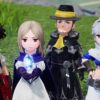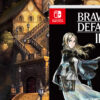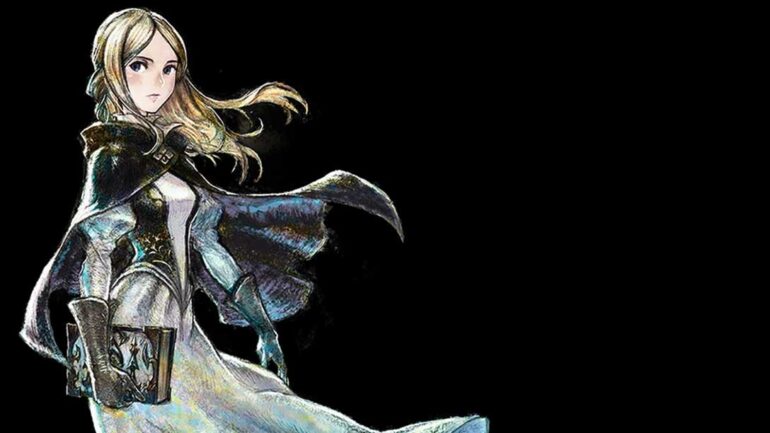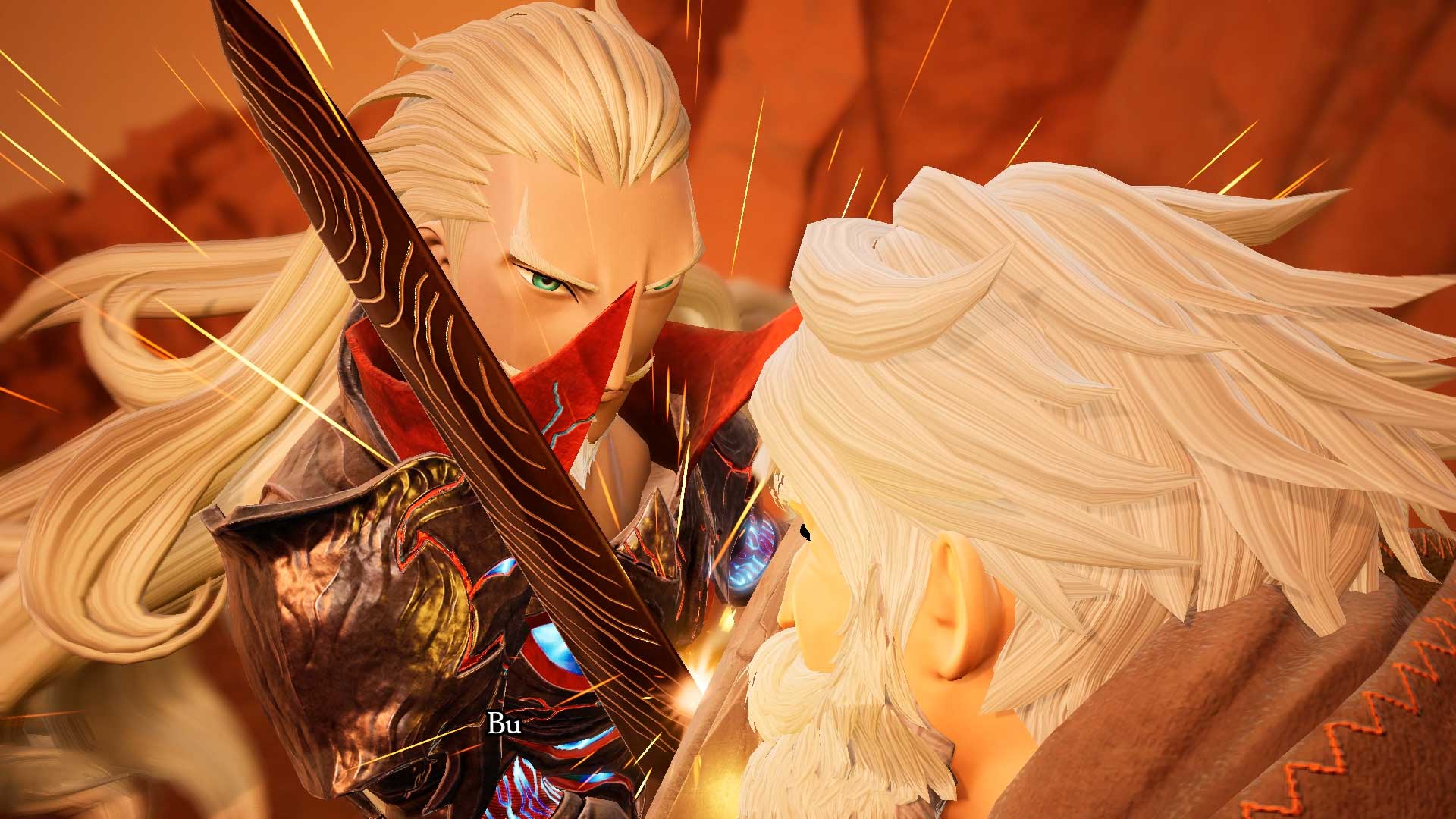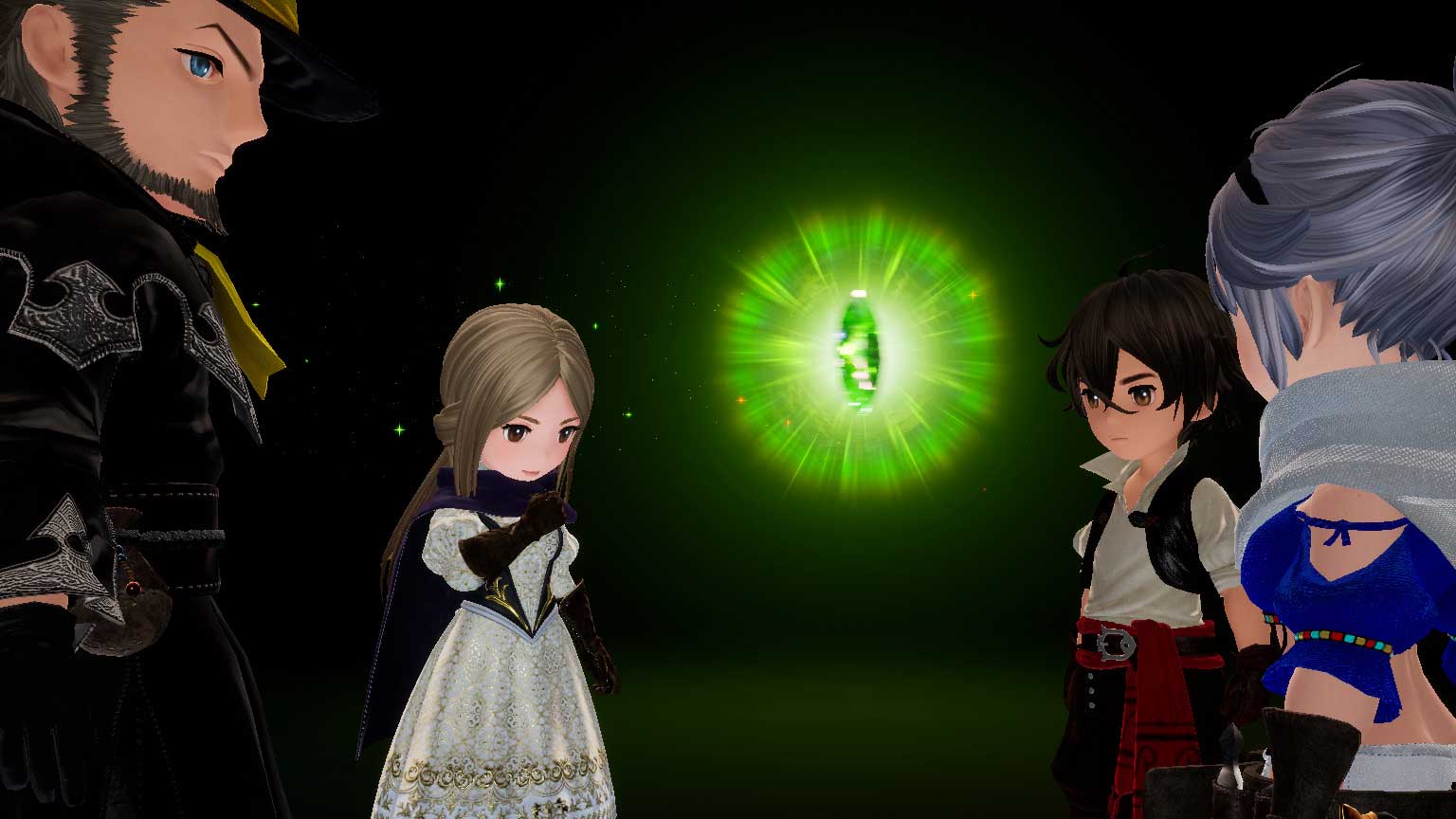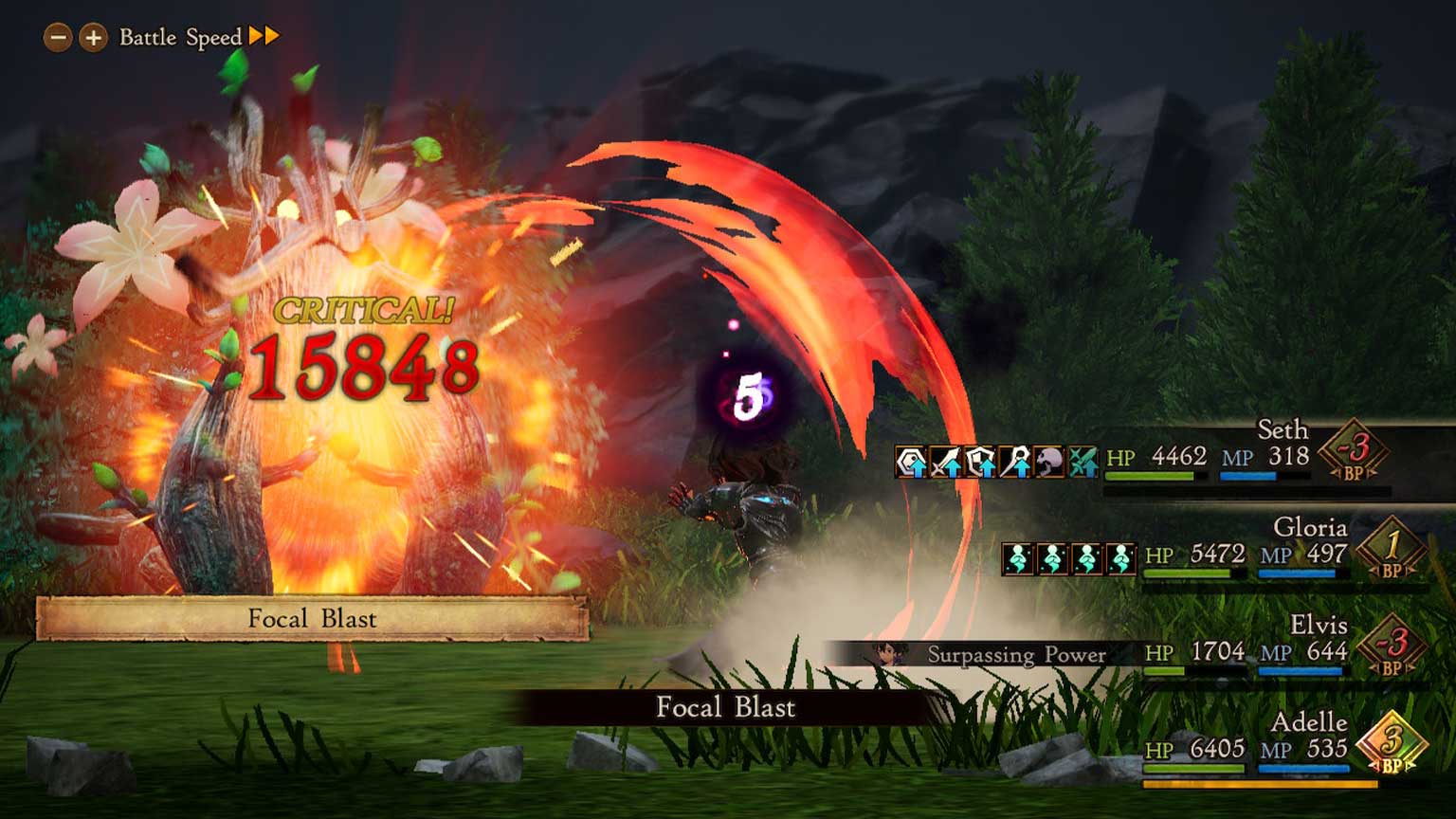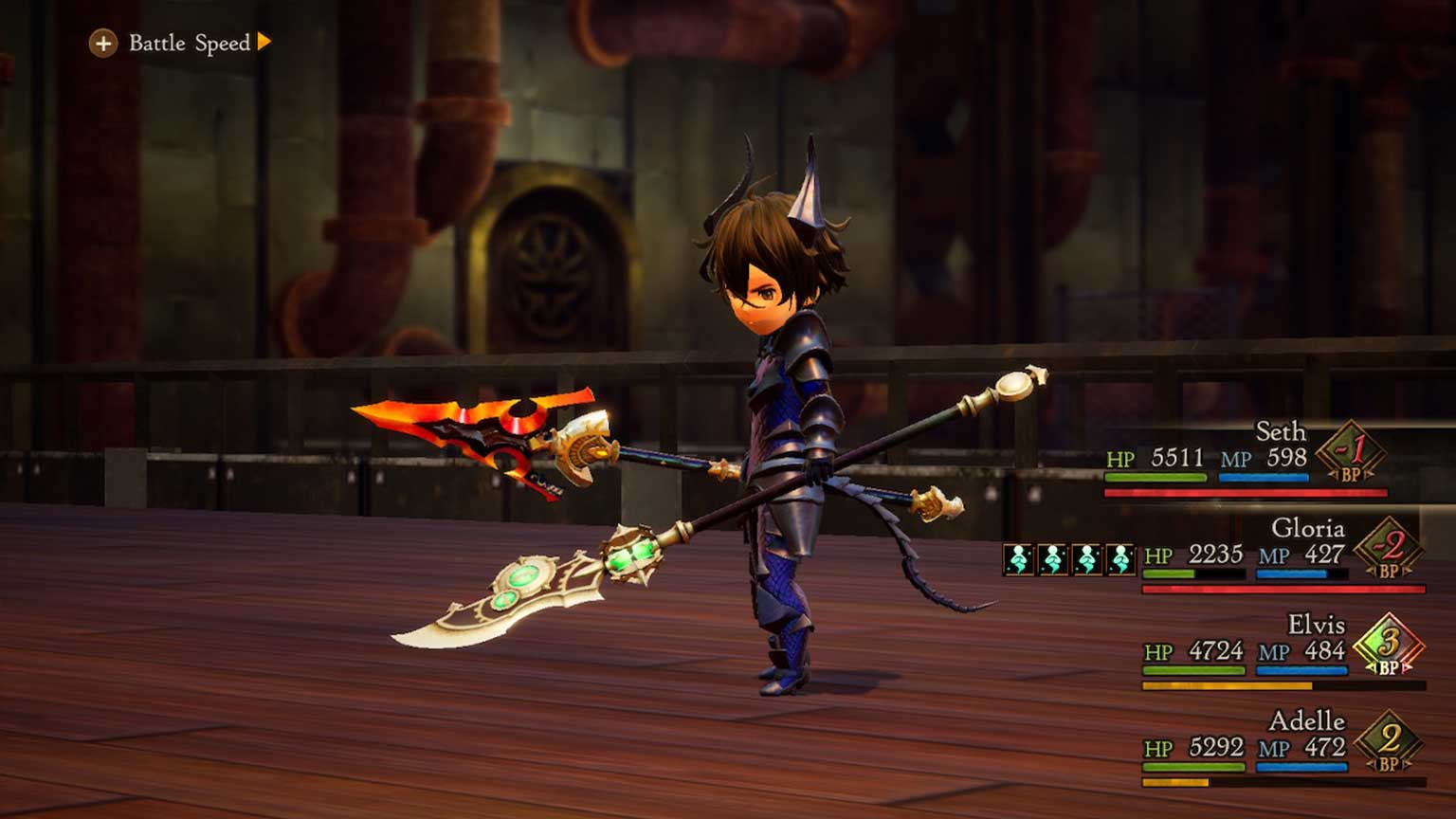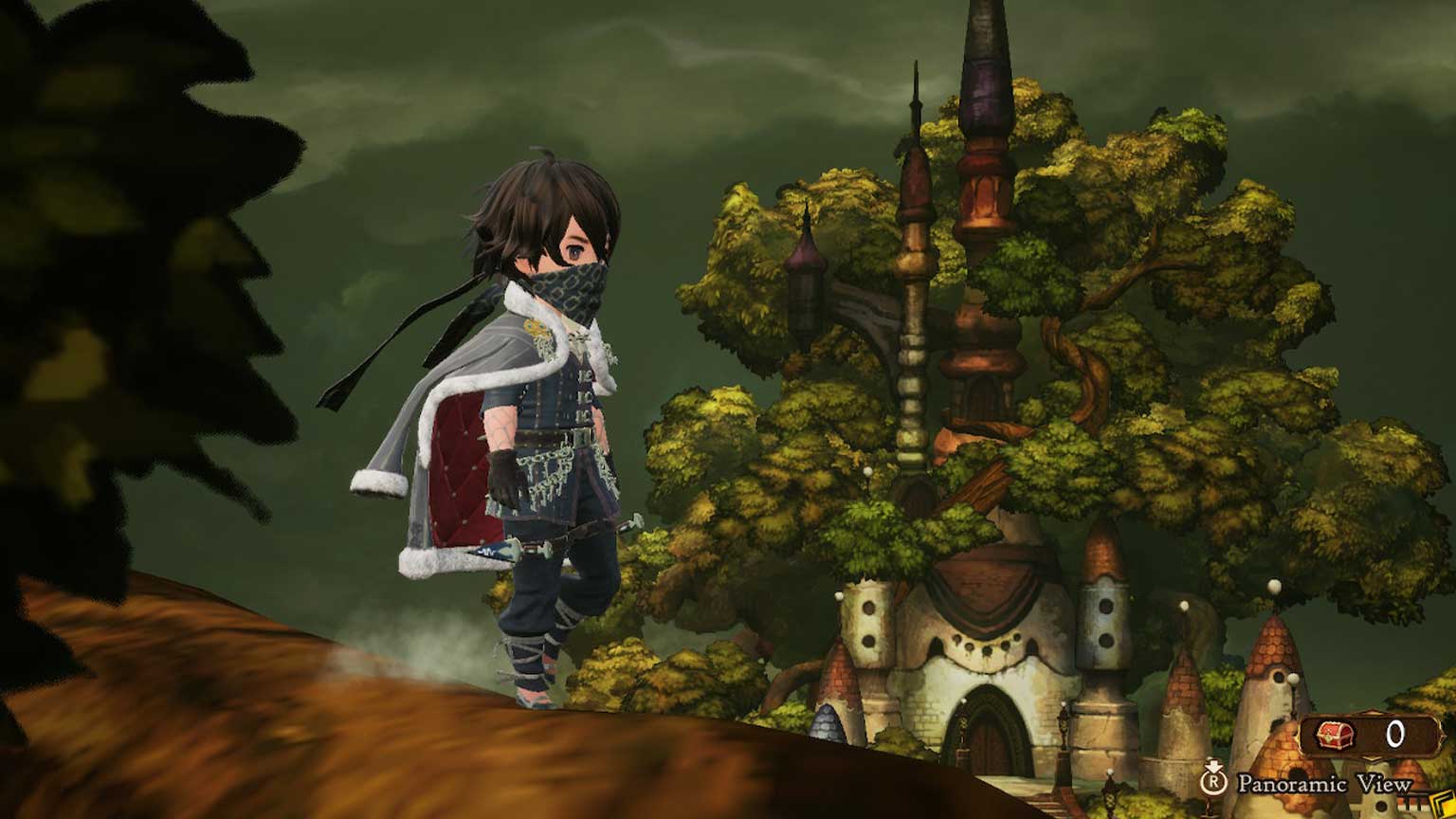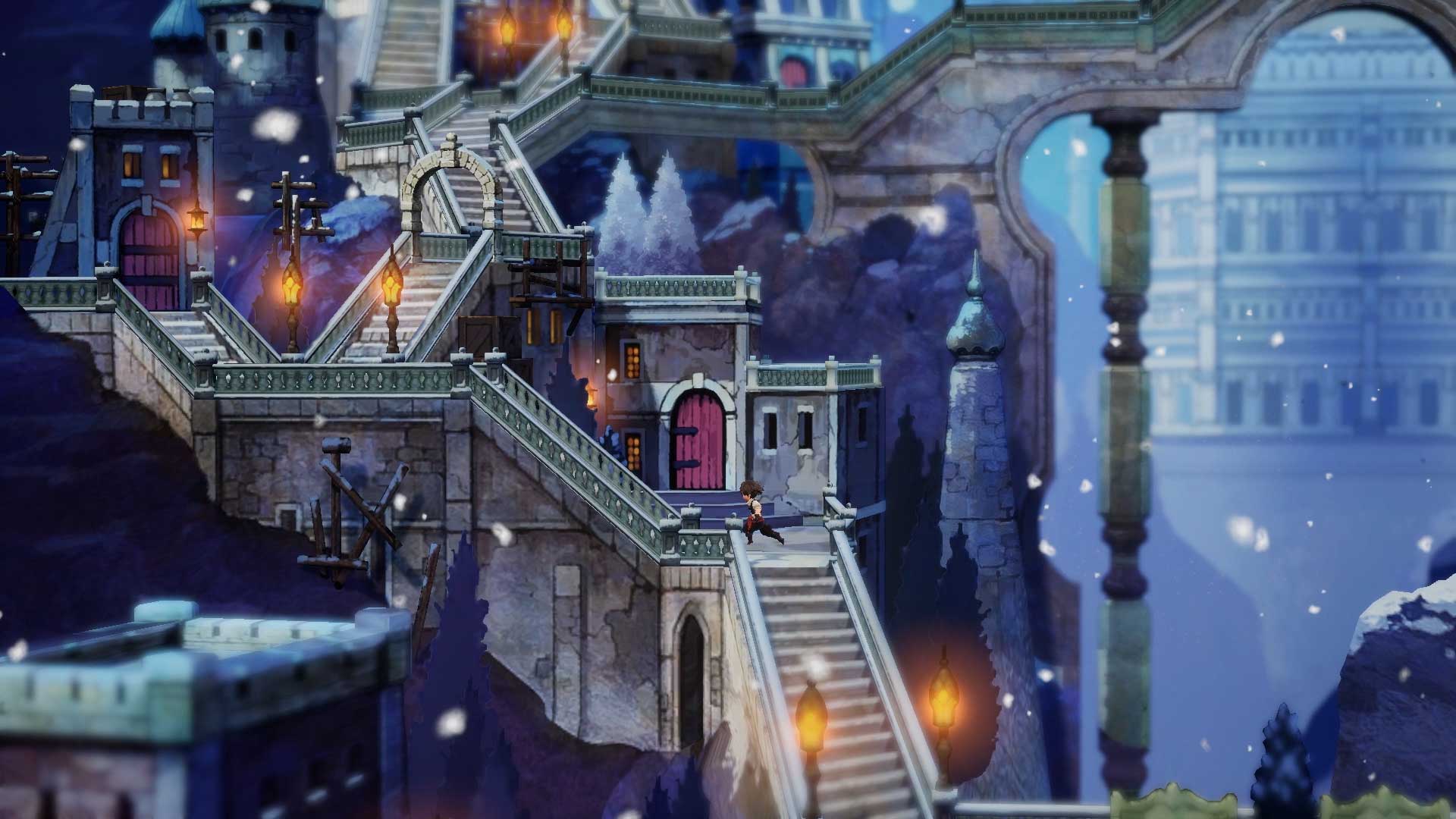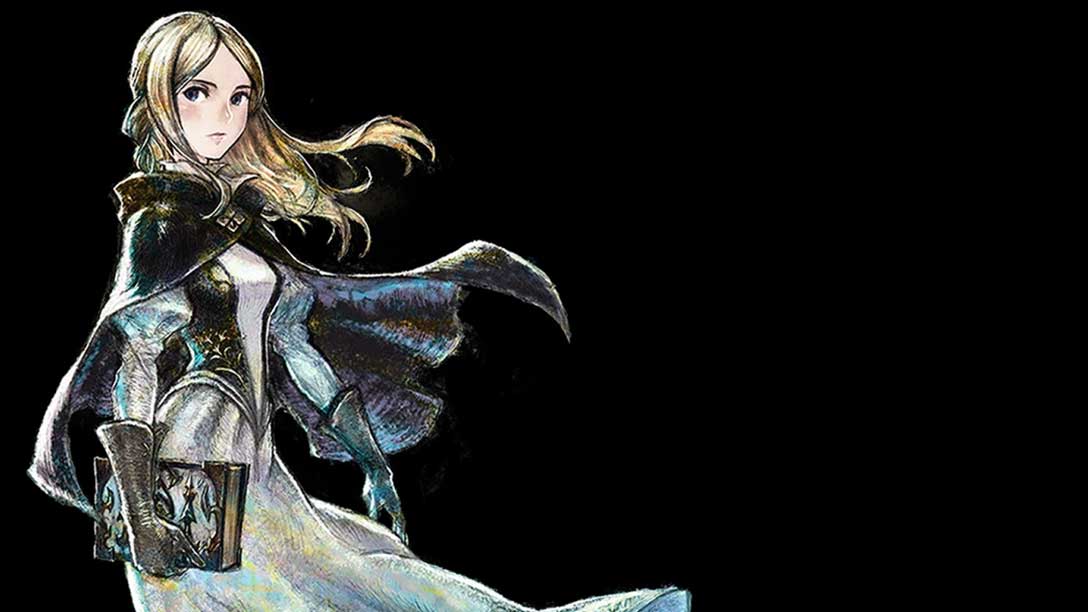When Bravely Default II was announced, it was an odd surprise. Not necessarily because of the game existing – the series has shipped over a million copies – but because it’s the third game in the series despite being called Bravely Default II. On the name, the series producer stated that it was because of his belief that Bravely Second, the latest game, didn’t live up to fan’s expectations. There’s a lot of pressure on Bravely Default II, then, to be a better sequel than Bravely Second – and while it is in many aspects, it doesn’t come without a few caveats.
Bravely Default II takes place in a separate world from previous games. This time, it all goes down on a continent called Excillant, divided into five distinct kingdoms. As the game begins, Holograd has begun annexing neighbourhood kingdoms to conquer the continent. You play as Seth, a sailor who has washed up on the shores of Excillant. After meeting Gloria, a princess of the ruined country Musa, the pair set off on a journey to find four elemental crystals stolen from her and stop the Holograd empire.
Yes, another story in an RPG centred around crystals, but Bravely Default II is surprisingly engaging. While the cast is unevenly spotlighted, with some commanding more development than others, though all of them as equally likeable. Without delving into spoilers, the story goes where you’d expect it to go, but that’s not to say it’s terrible, just well-trodden. Perhaps more surprisingly, the story can get dark and macabre, though this makes some of the critical moments even more memorable.
If you’ve never played Bravely Default before, you should. While Square Enix has shifted Final Fantasy into the flashier higher production fare, Bravely Default is the opposite. Taking things deftly in the opposite direction, Bravely Default is a turn-based RPG that harkens back to Final Fantasy’s classic era. If you liked any of the Final Fantasy games up until Final Fantasy X, chances are you’ll adore Bravely Default.
But first, the battle system. Bravely Default II carries over almost everything from the original game. There’s standard options available in battle, as you’d expect in a game of this ilk. The “Brave” option lets you “borrow” future turns so that you can act four times in one turn but can’t act until the turns you’ve borrowed have passed. “Default” puts your character into a defensive state but accumulates a turn for you to use with “Brave” without the penalty. The Bravely Second mechanic from previous games, where you could freeze time, is now gone. However, I’d argue that was a pointless gimmick anyway.
It’s hard to explain on paper, but I assure you it’s a game-changer in practice. Too often in older games, I’d wish I could cast two spells in one turn, and the Brave-Default system provides that flexibility. If you’ve got a boss down to their lowest level of health and want to quickly finish them before they retaliate or heal – you can do that too. It adds an incredibly dynamic risk-reward aspect to the combat. Having your enemies be able to Brave and Default means you must think about each turn more as well. It’s a great, well-balanced system that adds a significant layer of strategy to an already engaging game.
Harkening back to the first three Final Fantasy games, Bravely Default II also features an extensive job system. For the entire adventure, you’ll stick with the same four party members while being able to assign two roles to each out of a pool of over twenty different jobs. You level up both your characters and your jobs naturally as you earn experience, but levelling each individual job unlocks skills and abilities. Many of these are your standard RPG fare – mages, warriors, thieves, and the like. Others are kookier – the Arcanist is a mage with mighty magic but so powerful that it damages your party too.
The job system is a joy to play with because it rewards players savvy enough to mix roles to perfect the party’s synergy. The Arcanist’s volatile spell casting can be easily complemented by a fully levelled Spiritmaster, who’s perk heals you after each turn; or a Shield Master, who can nullify magic damage on the party for a single turn. Similarly, levelling up jobs allows you to unlock abilities applied to your character for use even when that job isn’t equipped. There’s a lot of flexibility in building your party and approaching each battle in Bravely Default II, and it’s why I enjoyed the game so much.
But an aspect I really struggled to enjoy was the dungeons. Putting aside the fact that a few of them reuse assets, too many of them were bland and too straight-forward. I could appreciate that Bravely Default II lets you wander into almost any dungeon from the get-go. But most dungeons (barring one) are only challenging because they’re long winding mazes without a map. There’s so much to enjoy about Bravely Default II, but navigating dungeons was my least favourite thing to do.
On a similar level, the optional content is very hit and miss. There’s over a hundred side quests in the game, so naturally, some would be average. The best ones are the best kinds – self-contained and well-produced stories of the land. They better flesh out the world and your characters. The worst is the kind you’d see in a game released decades ago – requiring you to go from point A to point B, only to be told to go back to point A again. Such simplistic and basic quest design is quite bluntly tedious and feels like incessant busy work.
But when you’re done with Bravely Default II, there’s still quite a bit to do after the credits roll. Without ruining anything, the game expands the job system even more, and there’s a whole new chapter to complete too. I’d argue it’s essential to complete this additional chapter to get the entire experience. However, the story feels complete enough if you can’t finish the extremely challenging post-game content.
But how long will it take you to get to that point? Bravely Default II lets you adjust battle speeds to make grinding less of a chore, and while I played at the highest speed (4x), it took me roughly 45 hours to finish the main story. To compare, it’s about on par with Bravely Default and Bravely Second but a little bit under Octopath Traveler. Still, it’s one of the better-paced RPGs that I’ve played, and it never overstayed it’s welcome. And don’t worry, there’s no tedious final act either.
From the same minds that brought us the first two games and Octopath Traveler, Bravely Default II is a looker. Adopting the first game’s pop-up picture book style, Bravely Default II does excellent work in making its key locations visually arresting. I’ve oft lamented the death of pre-rendered backgrounds in RPGs like the Playstation Final Fantasy games, but Bravely Default II’s stunning art direction gets close to nailing that look. Outside of the cities, where things are less visually impressive, it’s hard to not notice the constant slowdown when too many enemies are on-screen. Still, Bravely Default II lives up to the series illustrious visual standard, which is a blessing.
The same can be said for both the soundtrack and the voice work too. Revo, the Japanese composer who scored the original game, returns for Bravely Default II. His score does elevate the experience – perfectly channelling the nostalgic charm of the older Final Fantasy games but with an energetic twist. Perhaps that’s too vivid a description, but the soundtrack is genuinely endearing – I found myself humming the battle themes long after my Switch was turned off. The voice work is similarly strong, with most of the cast turning in some stellar performances. Seth, the protagonist, is a bit flat, but otherwise, everyone does a fine job; though if you so wish, both Japanese and English voice options are included.
